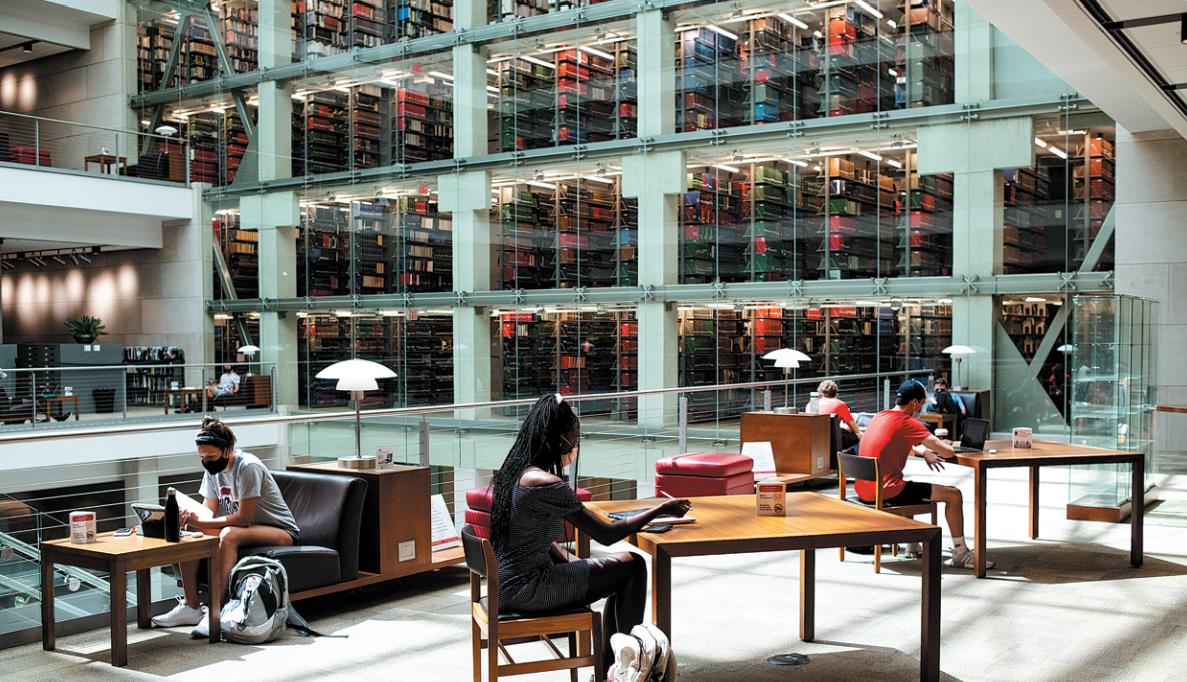Visa curbs, virus challenge Chinese students in the US


Overseas arrivals fall as universities face budget cuts and lose revenue
Despite his parents wanting him to go to a university in the United States, He Tianhao chose to further his studies in autonomous systems at a European institution after graduating from the University of California, San Diego last summer.
To prepare him for university, his parents sent him to an international high school in Beijing, where he said many students aimed to attend a US higher education institution.
"The university was great. The academic environment was great. The professors were great. Everything would be great if you could live on the campus forever," he said.
He arrived in the US in the fall of 2016. As a Chinese international student, he described his four years in the country as eventful.
There was the Trump administration's proposed visa ban on Chinese students, visa restrictions on such students in STEM(science, technology, engineering and mathematics) fields over "national security" concerns, and rising racism and violence against Chinese and other Asians due to the COVID-19 pandemic.
"My undergraduate major was machine learning-one of the hot areas under the government's scrutiny. Chinese graduate students in this field have to renew their visa every year. I heard that some have been stuck in China for several years," He said.
The pandemic further complicated the visa challenges. On Jan 31 last year, the Trump administration imposed a travel ban on non-citizens who were in China during the preceding 14 days. This ban remains in place, but in April, the Biden administration made exceptions for international students in China and other countries.
However, this was too late for Suzy Liu, who received notice for a visa appointment on May 4.
Under the exemption, international students can apply for visas if they attend universities for classes starting on Aug 1 or later. Liu is not eligible, as she has recently graduated from San Francisco State University.
She returned to China for a 10-day break in early January last year. "I never expected a short stay in China would change my career path forever," she said.
Liu planned to become a lecturer in Asian American studies at San Francisco State University after graduating this summer. Then, the pandemic emerged and US embassies and consulates worldwide were closed. Her visa appointments were canceled five times last year.
"There are many students like me. We have a WeChat group, in which we share information and help each other," she said.
Some students managed to transfer to universities in the United Kingdom, Liu said, and others planned to fly to Singapore or Canada to apply for a visa, before entering the US after 14 days' quarantine in the third country.
"After consideration, my family and I decided to give it up because I didn't want to risk being infected," said Liu, who has settled in Qingdao, Shandong province, as a translator.
Even if visa processing resumes, industry experts have voiced concern about the backlog of applications at US embassies and consulates after more than a year of reduced operations.
Last summer, only 160 student visas were processed in China, whereas in the previous three summers, more than 70,000 visas were handled, according to Open Campus, a non-profit news organization dedicated to higher education.
Andrew Hang Chen, vice-chair of the National Association for Foreign Student Advisers' China Member Interest Group, initiated an online petition to the US State Department, alerting it to what he called "the Chinese student visa crisis".
Without F-1 visa processing for Chinese students, their disappearance from US campuses in the 2021-22 academic year would be an imminent crisis, Chen said in the petition. NAFSA has since been renamed the Association of International Educators.
According to a report by the Institute of International Education, 90 percent of US universities are aiming for international students to return for the 2021-22 academic year by offering in-person classes, while since autumn, 77 percent of universities have shown strengthened commitment to recruiting international students.
But with visa challenges and pandemic-related restrictions, the question being debated is whether international enrollment at US colleges and universities will recover.


















